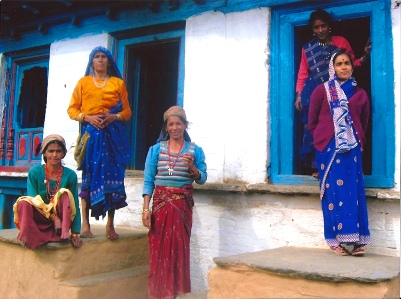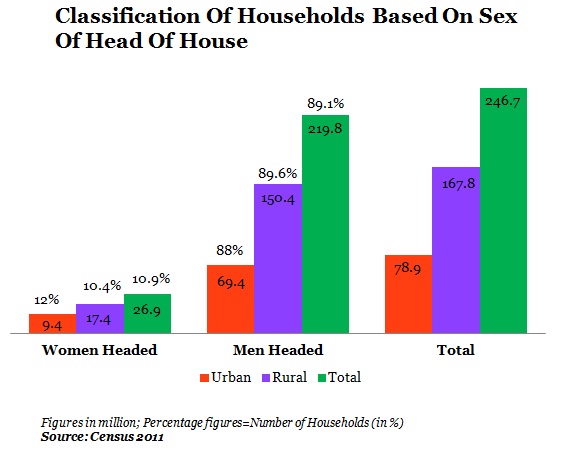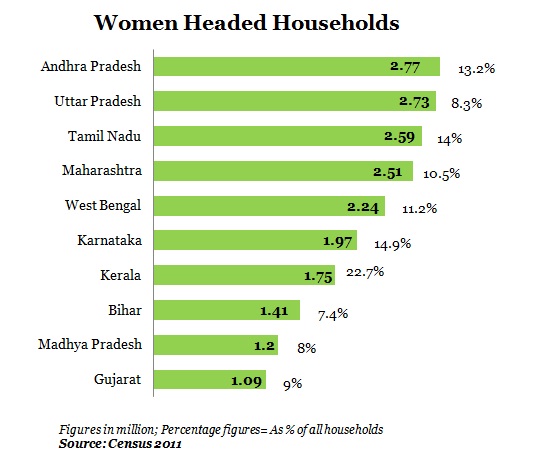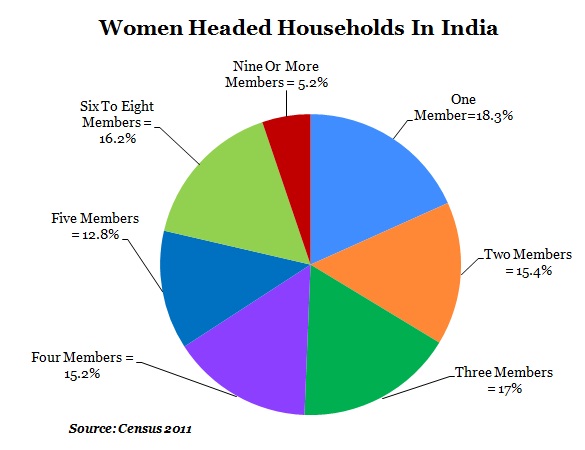The Man Of The House, Is A Woman
 Mohan Bhagwat, head of Hindu right wing group Rashtriya Swayamsevak Sangh or RSS kicked up a furore recently when he referred to marriage as a contract between spouses wherein it was the woman’s duty to look after the house and keep the man happy. In return, the man would provide for her needs.
Mohan Bhagwat, head of Hindu right wing group Rashtriya Swayamsevak Sangh or RSS kicked up a furore recently when he referred to marriage as a contract between spouses wherein it was the woman’s duty to look after the house and keep the man happy. In return, the man would provide for her needs.
If the woman failed to keep her part of the contract, the man was free to walk out on her. Likewise, a woman was free to leave her husband if he failed to keep his part of the contract.
Sounds interesting but what happens when men don’t run the households? Tina Edwin finds that there are an increasing number of households in India that are being run by women. Census 2011 data on women-headed households says, for instance that a total of 26.8 million households across India are headed by women. That’s 10.9% of the 246.6 million households in the country.
The number of such households has risen from 19.9 million (of the total 191.63 million households) since the population enumeration of 2001. Moreover, a vast majority of these women headed households, about 17.4 million, are in rural India or Bharat. While the proportion of women headed households is higher at 12% in urban areas, their numbers are just 9.4 million.
Figure 1
AP & UP Have Highest Women Headed Homes
A significant number of women headed households are in states like Uttar Pradesh that are not known for being progressive on welfare or status of women. Andhra Pradesh has the highest number of such households. However, the proportion of such households to the total households is small in some large states despite their numbers, as may be seen from the table below.
Figure 2
The high proportion of women headed households to all households in Kerala is easily explained by migration of men to West Asia and other parts of the country in search of work. Hilly states - Himachal Pradesh (18.3%) and Uttarakhand (17.1%) - where economic development was slow also have high proportion of households headed by women. Suicides by farmers in states such as Andhra Pradesh and Maharashtra owing to crop failure may partly explain the large numbers of women headed households in these states.
Reasons: Widowhood, Divorce & Migration
Most of these women do not become head of their household or live alone because they choose to. Rather, they may have been forced by circumstances. A paper by Mayra Buvinic & Nadia H Youssef titled “Women Headed Households: The Ignored Factor in Development Planning” for International Center for Research on Women in 1978, attributes emergence of women headed households to widowhood, divorce, separation and desertion; migration of male members for long periods; loss of economic function by resident males due to severe unemployment, disability, illness and male reluctance to accept jobs seen as status reducing.
Lakshmi Lingam writing in The Economic and Political Review in 1994 (Women-Headed Households : Coping with Caste, Class and Gender Hierarchies) suggests that factors such as grown up sons living in independent nuclear units also contribute to the emergence of women headed households.
While 60% of the women headed households have 2-5 members, Census 2011 also found that more women than men live alone in this country – a total of 4.92 million women (including 3.69 million in rural areas) are single member households compared to 4.18 million for men.
Overall, about 18.3% of the women headed households consist of women living alone. That proportion is higher at 21.1% in rural areas compared to 12.8% in urban areas. Chhattisgarh, Madhya Pradesh, Tamil Nadu and Andhra Pradesh are among states with high proportion of single member woman households.
Figure 3
Increasing Crimes Against Women
And living alone is not safe. Some states with large numbers of women-headed households, including single member households, are notorious for crimes against women. For instance, National Crime Records Bureau data for 2011 show 28,246 cases of crime against women from Andhra Pradesh. West Bengal reported 29,133 cases and Uttar Pradesh, 22,639 cases and Madhya Pradesh, 16,599 cases.
Overall, 228,650 cases were reported in 2011, NCRB data show. These includes 24,206 cases of rapes, 42,968 cases of molestation, 8,570 cases of sexual harassment and 35,565 cases of abduction and kidnapping. Cruelty by husbands and relatives was the most reported forms of crime with 99,135 cases.
Given the rising trend in women headed households, policies perhaps need greater focus here. Transferring cash to women under direct benefits transfer will definitely help empower women and improve the lot of these households. But they also need to find enough work that pays adequately, whether through employment guarantee programmes or otherwise. They also need help to acquire new skills.
Census 2011 data shows that women headed households are smaller in size compared to those headed by men and have fewer possessions such as radio, television, mobiles and bicycles. Larger proportion of women headed households reported not owning any of these items, quite a contrast to those owned by men headed households. Similarly, smaller proportion of women headed households had access to banking services than men headed households.
Policy clearly needs to go beyond inclusion, to also making women, even those living alone, feel safe.
(The author is a Delhi-based freelance journalist. She can be reached at tinaedwin@yahoo.com)





